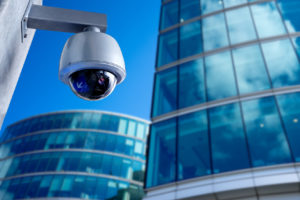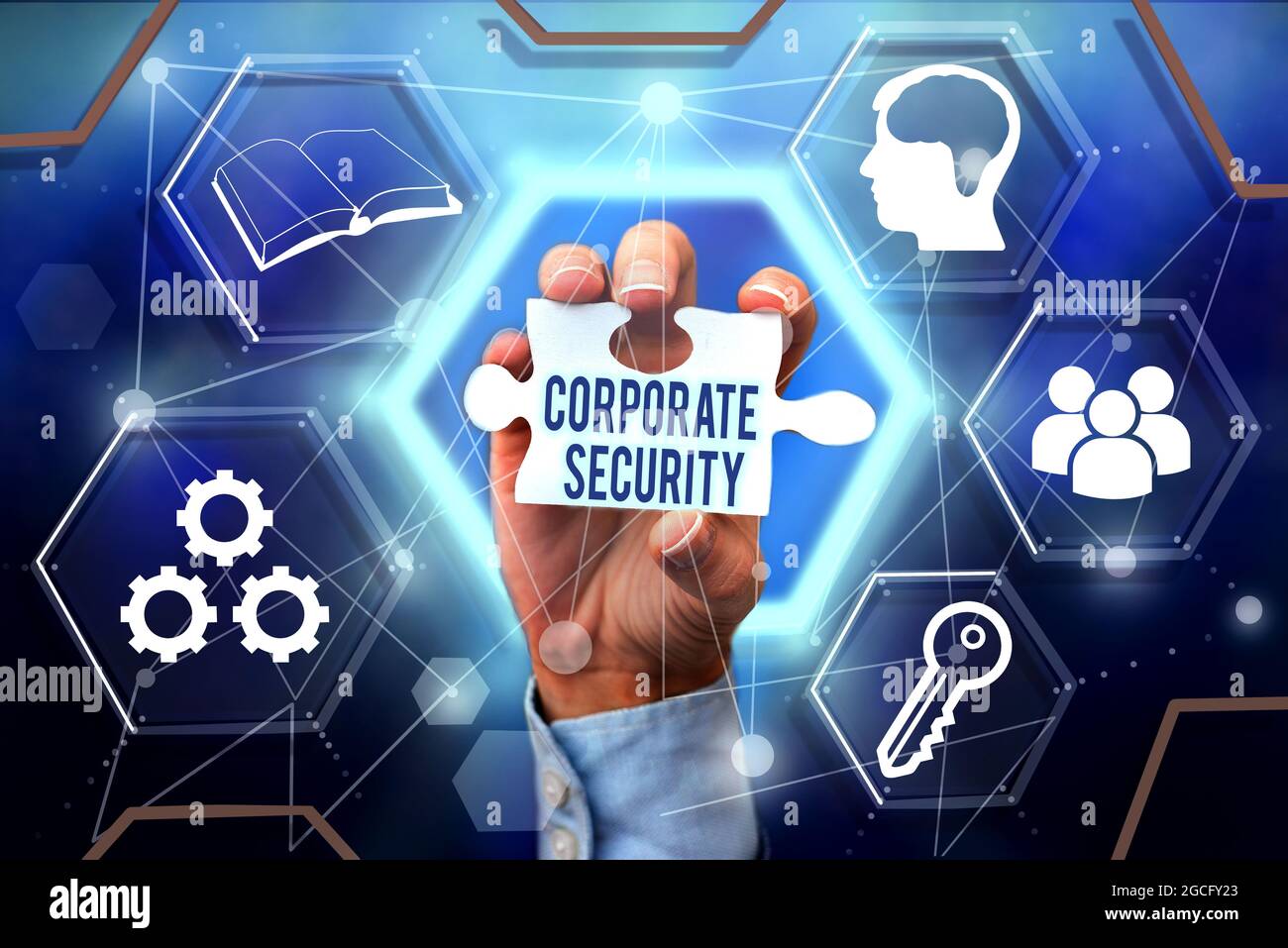Improve Corporate Security: Techniques for a Robust Defense
From Cybersecurity to Physical Steps: Reinforcing Company Protection in an Altering World
By incorporating the toughness of both cybersecurity and physical safety and security, business can produce a thorough protection strategy that resolves the diverse variety of dangers they deal with. In this discussion, we will certainly explore the altering risk landscape, the need to incorporate cybersecurity and physical security, the application of multi-factor verification steps, the value of staff member recognition and training, and the adjustment of safety and security procedures for remote workforces. By analyzing these vital areas, we will obtain beneficial insights into exactly how companies can enhance their corporate safety in an ever-changing globe.
Understanding the Altering Hazard Landscape
The evolving nature of the contemporary world demands a detailed understanding of the altering threat landscape for reliable business protection. It is critical for companies to remain informed and adjust their security gauges to attend to these evolving threats.
One trick element of recognizing the altering threat landscape is identifying the various types of threats that organizations encounter. In addition, physical dangers such as burglary, criminal damage, and corporate espionage stay widespread worries for services.
Tracking and examining the danger landscape is necessary in order to determine potential dangers and vulnerabilities. This entails remaining upgraded on the current cybersecurity trends, evaluating threat knowledge records, and carrying out routine risk analyses. By recognizing the altering threat landscape, organizations can proactively execute ideal protection actions to reduce threats and safeguard their possessions, credibility, and stakeholders.
Integrating Cybersecurity and Physical Safety
Integrating cybersecurity and physical protection is critical for thorough business protection in today's digital and interconnected landscape. As organizations significantly count on technology and interconnected systems, the boundaries between physical and cyber threats are coming to be obscured. To efficiently protect versus these threats, a holistic strategy that combines both cybersecurity and physical protection actions is crucial.
Cybersecurity focuses on protecting digital possessions, such as data, networks, and systems, from unauthorized accessibility, disruption, and burglary. Physical protection, on the other hand, includes steps to protect physical assets, people, and facilities from risks and susceptabilities. By integrating these 2 domain names, organizations can resolve susceptabilities and risks from both electronic and physical angles, thereby improving their total protection pose.
The assimilation of these 2 self-controls enables an extra detailed understanding of protection threats and enables a unified response to cases. As an example, physical accessibility controls can be boosted by integrating them with cybersecurity procedures, such as two-factor authentication or biometric identification. Similarly, cybersecurity actions can be matched by physical security actions, such as surveillance electronic cameras, alarm systems, and safe access factors.

Implementing Multi-Factor Authentication Steps
As companies increasingly focus on detailed protection steps, one reliable approach is the application of multi-factor verification actions. Multi-factor verification (MFA) is a safety and security method that requires individuals to provide several forms of identification to access a system or application. This strategy adds an added layer of protection by incorporating something the individual recognizes, such as a password, with something they have, like a fingerprint or a safety token.
By implementing MFA, companies can dramatically improve their safety stance - corporate security. Standard password-based authentication has its limitations, as passwords can be quickly endangered or forgotten. MFA minimizes these threats by including an added verification element, making it harder for that site unauthorized individuals to get to sensitive info
There are numerous kinds of multi-factor verification methods readily available, consisting of biometric verification, SMS-based verification codes, and hardware symbols. Organizations require to analyze their particular needs and select one of the most proper MFA option for their requirements.
Nonetheless, the application of MFA ought to be thoroughly planned and executed. It is critical to strike a balance in between protection and functionality to avoid customer disappointment and resistance. Organizations must likewise think about potential compatibility concerns and give appropriate training and support to ensure a smooth change.
Enhancing Worker Understanding and Training
To enhance company security, organizations have to prioritize boosting staff member awareness and training. Several security violations take place due to human mistake or absence of understanding.
Effective employee understanding and training programs must cover a vast array of topics, consisting of information defense, phishing strikes, social design, address password health, and physical safety and security procedures. These programs need to be customized to the details needs and duties of various employee roles within the company. Regular training simulations, workshops, and sessions can help employees develop the needed abilities and understanding to determine and respond to protection hazards effectively.
Furthermore, companies must motivate a culture of security recognition and supply ongoing updates and suggestions to maintain workers informed concerning the most current threats and reduction strategies. This can be done through inner communication networks, such as e-newsletters, intranet portals, and e-mail campaigns. By cultivating a security-conscious workforce, companies can dramatically decrease the chance of safety incidents and shield their valuable possessions from unapproved gain access to or concession.

Adapting Safety Measures for Remote Workforce
Adjusting company safety and security procedures to suit a remote labor force is important in guaranteeing the defense of sensitive information and possessions (corporate security). With the his explanation boosting pattern of remote job, companies should apply ideal safety and security procedures to minimize the threats associated with this new way of functioning
One essential element of adapting safety and security measures for remote work is establishing protected communication channels. Encrypted messaging systems and digital exclusive networks (VPNs) can aid shield delicate information and stop unauthorized gain access to. Furthermore, organizations should enforce making use of strong passwords and multi-factor verification to enhance the security of remote accessibility.
An additional crucial factor to consider is the application of safe and secure remote accessibility options. This includes providing workers with protected accessibility to corporate resources and data with digital desktop computer facilities (VDI), remote desktop protocols (RDP), or cloud-based options. These innovations make sure that sensitive details continues to be safeguarded while allowing employees to execute their functions efficiently.
.png)
Finally, thorough safety and security understanding training is essential for remote workers. Educating sessions need to cover best methods for securely accessing and dealing with sensitive info, determining and reporting phishing efforts, and keeping the overall cybersecurity hygiene.
Final Thought
Finally, as the hazard landscape continues to develop, it is vital for companies to reinforce their protection gauges both in the cyber and physical domains. Integrating cybersecurity and physical safety, carrying out multi-factor verification procedures, and enhancing worker understanding and training are vital steps towards accomplishing robust business safety. Furthermore, adapting security measures to accommodate remote workforces is crucial in today's altering world. By executing these procedures, organizations can reduce dangers and protect their valuable properties from potential threats.
In this conversation, we will discover the changing threat landscape, the demand to integrate cybersecurity and physical protection, the application of multi-factor authentication actions, the importance of worker awareness and training, and the adjustment of security steps for remote workforces. Cybersecurity procedures can be complemented by physical safety measures, such as security cameras, alarms, and secure gain access to factors.
As organizations significantly prioritize detailed security procedures, one reliable strategy is the execution of multi-factor authentication procedures.In verdict, as the risk landscape proceeds to progress, it is vital for organizations to enhance their protection measures both in the cyber and physical domains. Incorporating cybersecurity and physical security, executing multi-factor verification actions, and boosting staff member awareness and training are necessary actions in the direction of achieving robust company safety and security.